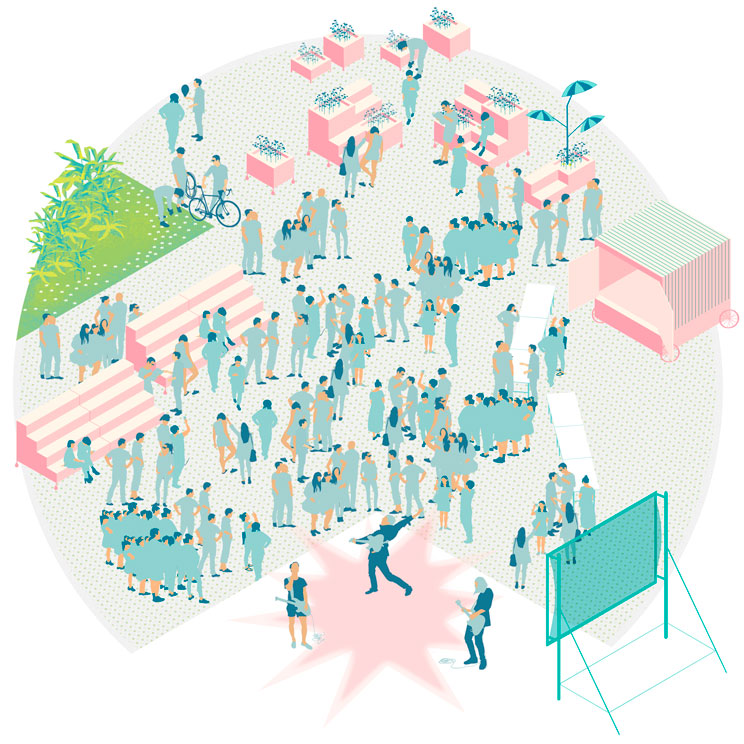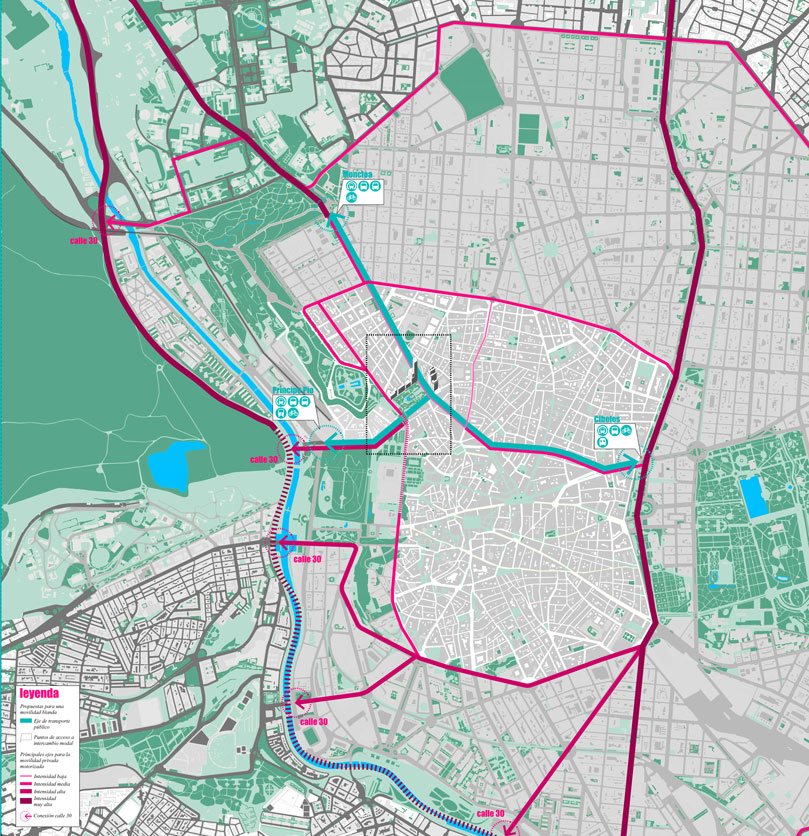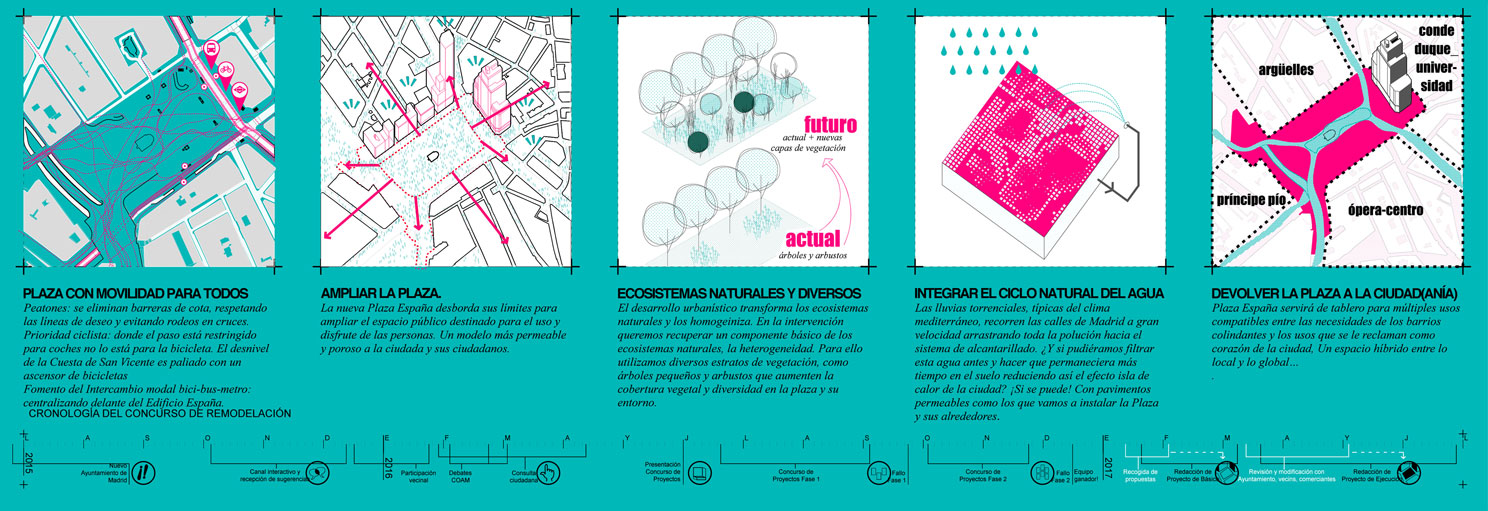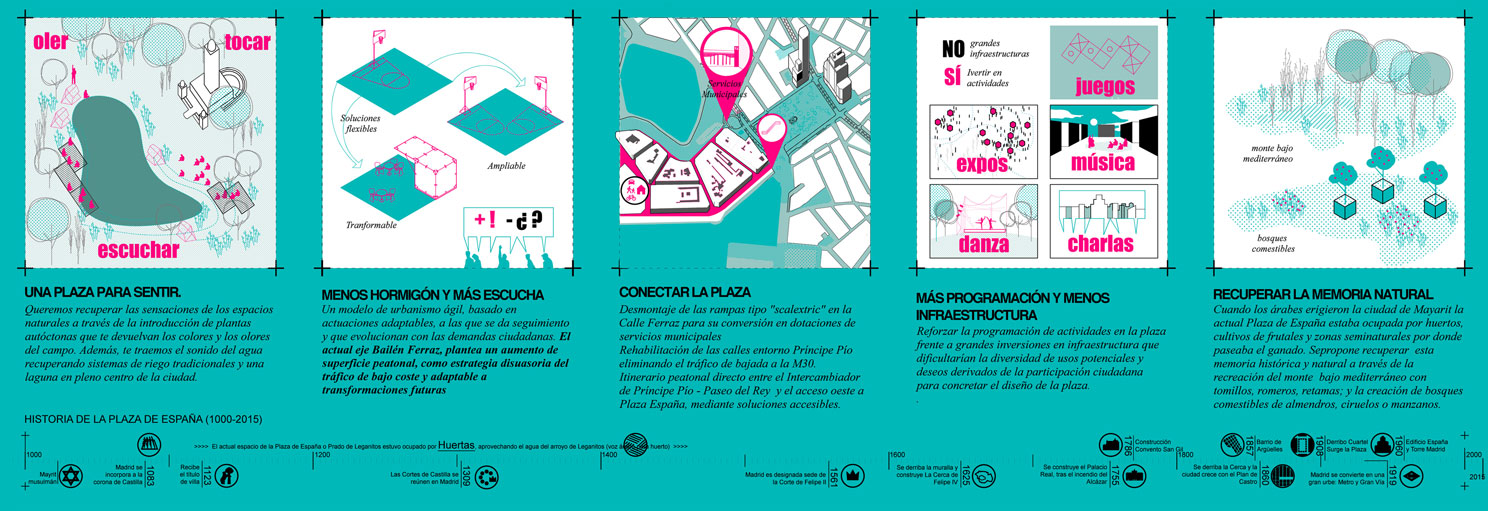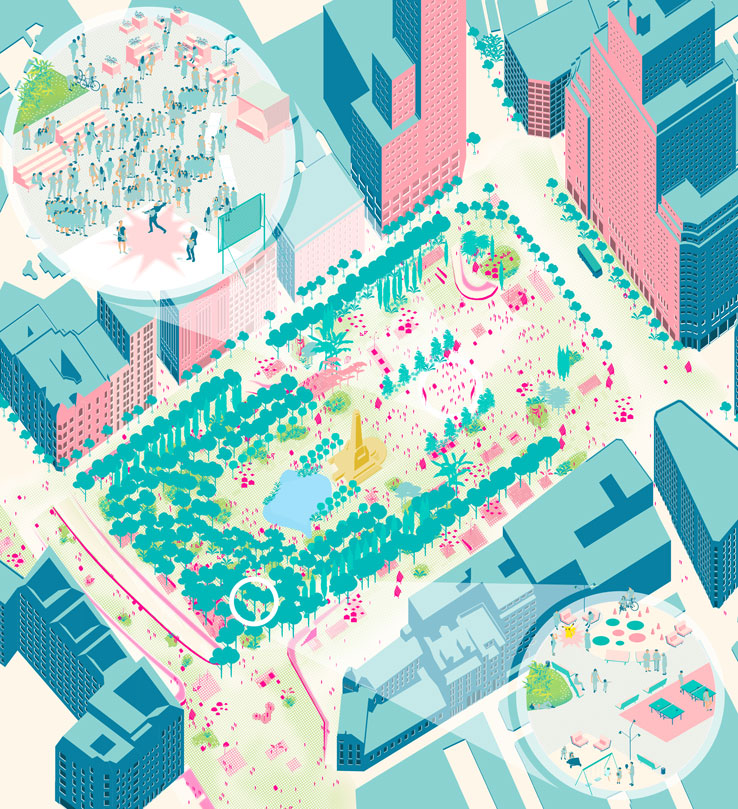#OPENCODE
Ideas competition for the remodelation of Plaza de España.
Madrid, 2016.
The Plaza de España presents a degradation process due to multiple negative factors: high levels of acoustic and air pollution, poor conservation of urbanization and existing vegetation, architecture barriers, lack of connection to other public spaces, but, overall, because of its traffic knot in the heart of the city.
The aim of the competition is to generate ideas for the re-urbanisation of Plaza de España and its surroundings. The project is a new conception of public space and urban landscape. It offers a reorganisation of mobility as well as it proposes new usages and activities while incorporating environmental and sustainable criteria. To that end, we built a multidisciplinary team in association with experts in citizenship participation (Paisaje Transversal), in mobility (Hécate Ingeniería) and in ecological restoration (Creando Redes). From the collaborative discussion and work emerged a plural proposal based on three main lines of action:
1. Mobility transformation, inside and outside the square
2. Restoration of the green urban infrastructure
3. Tools which allow the interaction between citizens and space
1. MOBILITY TRANSFORMATION, inside and outside the square.
The proposal aims to discourage the use of private vehicles in favour of public transportation. The public collective space gains dominance through the implementation of priority axes and the design of a single space for public transportation stops that will simplify the modal exchange with the subway and will allow harmonization of public transport, pedestrians and cyclists.
In order to achieve these goals, the project removed the function of the square as a point of concurrence and gate to the city for motorized traffic. Turns are limited but the accesses needed to handle the surrounding uses (neighbours, services, hotels, etc.) are maintained and the harmful transit flows are transferred to the large ring roads of the city, which are designed for that purpose.
2. RESTORATION OF THE GREEN URBAN INFRASTRUCTURE
The actions carried out at Plaza de España are a seed, the first step for a restoration of the green urban infrastructure of Madrid which will encourage the supply of goods and ecosystem services for the population, as well as the mitigation of the climate change.
The transformation of Plaza de España in a node to encourage connections of green spaces in Madrid, which are conceived from the re-naturalisation of this space through the ecological restoration of ecosystems.
3. TOOLS WHICH ALLOW THE INTERACTION BETWEEN CITIZENS AND SPACE
Seen from distance, the intervention at Plaza de España is based on the increase in ecological connectivity at a territorial scale, on the inversion of the mobility pyramid and, as a consequence, on the improvement of the quality of public space and living conditions–both in the Plaza itself and its surrounding- with the aim of making it extendible to Madrid.
In a closer scale, with the Plaza itself in mind, a sequential design system pursuits the following strategies:
1. The creation of a plain platform–on one single height- using all the space remaining in-between buildings where only the invariants appear; existent trees, Don Quijote statue, exits from the underground parking, etc. Thus, a more legible space and a clearer circulation, which makes the square more accessible, are achieved.
2. As a heterogeneous square, a mix space is generated due to a permeability gradient in which, as if it were a magma, more and less solid pieces are varying to be easily adapted to different urban situations.
3. A matrix of usages that encompasses and assesses every necessary use, its interrelationship and preponderance, is proposed. Taking into account conditions and compatibilities of the square, a shared solution, which can be modified was agreed on by the whole team.
Historically, the urban squares of Madrid have been gathering places for everyone; neighbours, citizens and tourists. Due to that, the interventions attempt to recover meeting and resting zones which have been turned into transit areas while, at the same time, give support to events of different scales.
All in all, the aim of the proposal is to build a friendlier city by transforming the current urban model and encouraging a green infrastructure in the centre where a Plaza de España will appear as a meeting point between citizens and their parks.
A Plaza de España for everybody who lives in Madrid and who lives Madrid, who can remember the days, when kids were playing in the street and when there was life in the squares and who wants the same for his and her own kids.
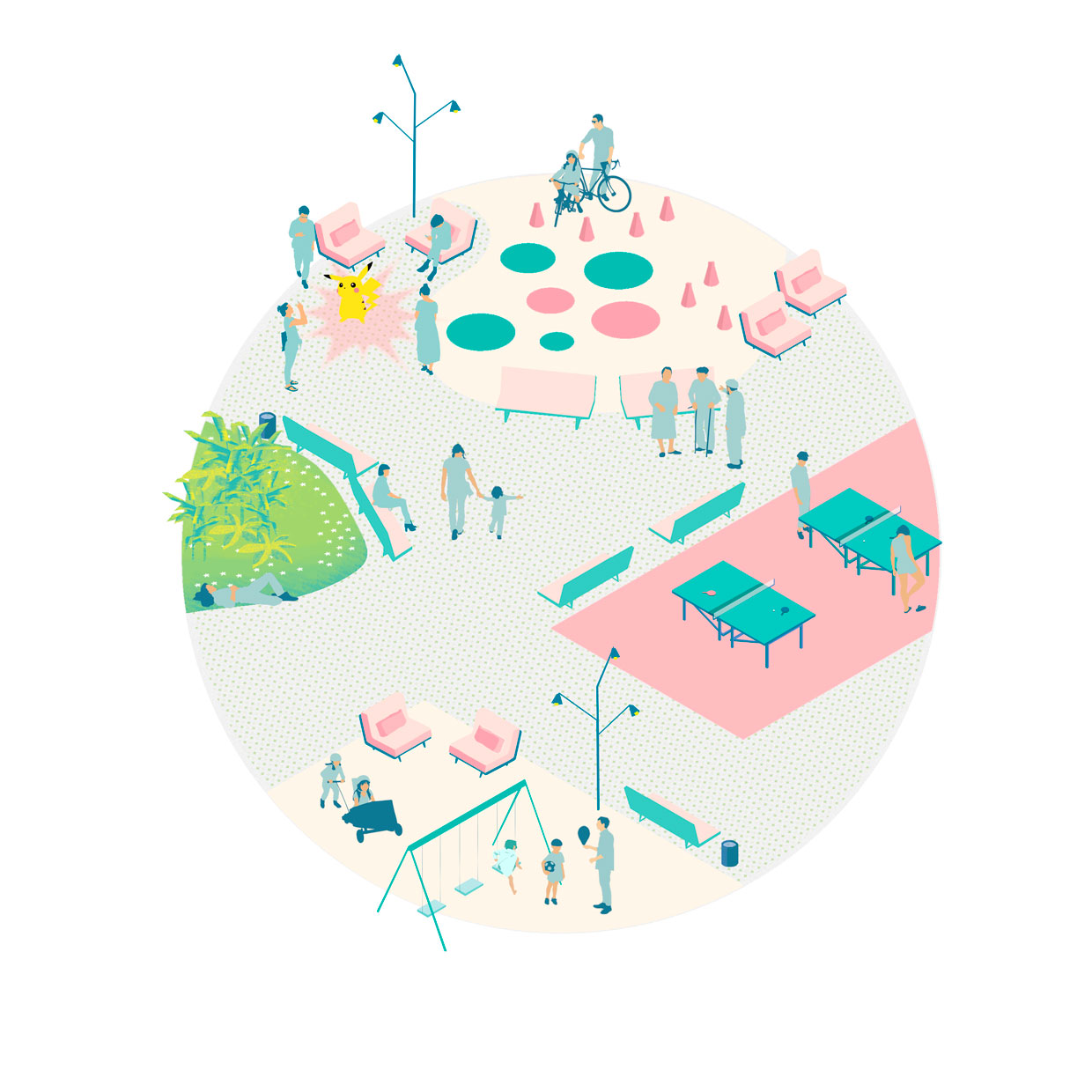 We are thankful for the debate and the shared knowledge with the multidisciplinary team,
We are thankful for the debate and the shared knowledge with the multidisciplinary team,
> Paisaje Transversal:
Iñaki Romero, Jon Aguirre, Jorge Arévalo, Pilar Díaz, Guillermo Acero.
> Hécate Ingeniería:
Miguel Álvarez, Samir Awad, Adrían Fernández.
> Creando Redes:
Sandra Magro, Ana Méndez.
> Arenas Basabe Palacios arquitectos
Enrique Arenas, Luis Basabe, Luis Palacios.
Collaborators: Silvia Muñoz, Lucía Leva.




